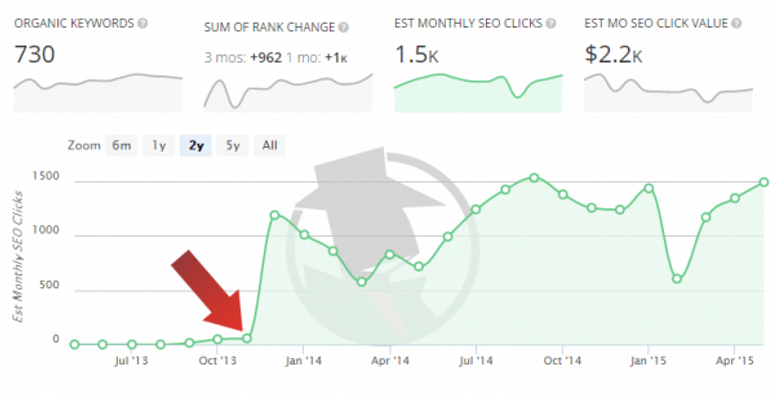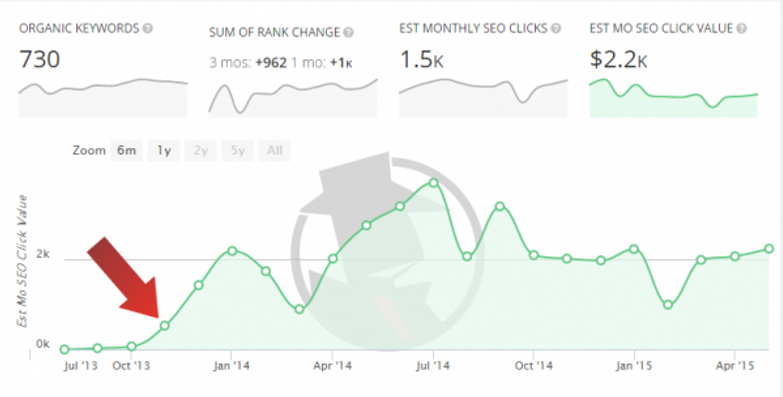A Simple Method to Measure Content Marketing ROI
- Fahad H

- Jun 14, 2015
- 3 min read

If you search online for “content marketing ROI,” you get close to 10 million results. The majority don’t provide anything particularly useful or actionable for typical marketers trying to justify their content marketing expenses to the CFO. So when I came across David Meerman Scott’s article on basing content marketing ROI on a Google AdWords equivalency, I was intrigued. I decided to run an analysis across our clients at Brandpoint.
First off, let’s get down our vocabulary. Many tactics make up the concept of content marketing, but we’ll leave that for another article. For the purpose of this analysis, we’re focused on the tactic of developing “on-site” content. Simply put, that means developing great content that lives on your website to attract, educate, and convert your audience. This content most commonly takes the form of a blog.
Scott’s article suggests measuring the value of your on-site content based on the organic traffic it generates and what that traffic would have cost through Google AdWords. We looked at a broad array of clients through this lens and measured the value of the organic traffic that we generated for them.
Here’s what the data shows about our average client:
Breaks even on its content expense within nine months, based on the value of the organic traffic
Sees a 200% or more ROI from that same content over 36 months (Again, we’re looking only at the value of organic traffic.)
Sees a 10-times lift in overall organic traffic to its site due to increasing its overall content footprint (It’s important to note that these clients were not regularly producing content prior to working with us, so a client who already is producing a lot of content would not likely see a similar lift.)
Here’s how you can do this analysis yourself using Google Analytics and Excel:
Looking only at the organic traffic for a group of content assets, find the number of entrances to the posts over the measurement period.
Use Google AdWords Keyword Planner tool to find the cost per click (CPC) for the primary keyword or phrase used in each piece of content.
Multiply your organic entrances by the CPC for that primary keyword and repeat across all the content.
Extrapolate the data using a linear extrapolation formula in Excel. (Organic traffic typically follows a shallow bell curve that a linear extrapolation evens out.)
This simple analysis is one way that marketers can justify their content investment based on concrete numbers. We get geeked doing the numbers because that’s who we are. But if you want to analyze the value of your traffic in a more turnkey way, several sites can help. One of the best is SpyFu.
While SpyFu’s main goal is competitive keyword research, you also can use the tool to measure the value of your own traffic. Here is some reporting for one of our favorite clients, a major insurer, and its consumer blog.
This chart shows its organic keyword growth, and the arrows indicate where additional, consistent, and focused content development began expanding the blog’s footprint:

This chart shows its SEO traffic by month:

Finally, this chart shows the value of that traffic in dollars:

The only flaw with analyzing the ROI of developing on-site content in either of these manners is that it doesn’t tell the entire value story. This is really the first step. There are many other benefits of developing great content for your site beyond organic traffic. Here’s a list of some of those benefits:
More social referrals and engagement
Increased time spent on-site
Improved lead generation
Higher conversion rates
More inbound links
More closed sales
When you take into account those on-site content benefits, the ROI goes far beyond 200%.
So, what are the key takeaway messages from all this?
If you’re looking for immediate results, you would be better off doing a pay-per-click search campaign on Google. (Note: We recommend that our clients invest in paid search as well.)
Content marketing does pay, and you really can measure the return on that investment.
Content marketing is a lot like working out. You’re not going to see a payoff in a week, but if you commit to doing it regularly over time, you’ll see amazing results. Bottom line: There is tremendous ROI in consistently developing great content for your audience. And, unlike other forms of marketing, content marketing pays dividends far into the future.
Measurement is one of the five core elements for running successful, scalable content marketing operations. Read our 2016 Content Marketing Framework: 5 Building Blocks for Profitable, Scalable Operations for an overview of the full strategic blueprint.
Cover image by Jeff Sheldon, UnSplash, via pixabay.com








Comments